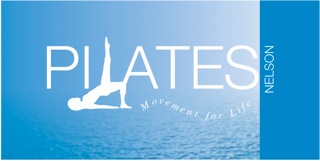Principles

The Guiding Principles of Pilates
Concentration
In order to maximise your workout, you must be completely present during your session. Full attention to and awareness of the entire body can make a basic exercise challenging and effective for even an advanced student. The more focus and mindful intention you bring to your workout the more effective and stronger you will become. Don’t let your mind wander, concentrate on improving your form by focusing on every detail of the exercises. If one brings full attention to the exercise and does it with full commitment, maximum value will be obtained from each movement.
Precision
Every exercise in the Pilates method has a purpose and a goal. In its ideal form, Pilates is practiced with precise attention to detail. Movements should be purposeful, clean, and integrated; parts of the body that are still should be absolutely still, while parts that are moving move with clarity. Most of the exercises in Pilates are very low repetition, thus you must focus on doing a few precise perfect repetitions rather than many half-hearted ones There is an appropriate placement and alignment relative to other body parts, and trajectory for each part of the body. Scan your body and focus on all the principles, as Joseph Pilates used to say “honor every movement”.
Control
Every movement of each Pilates exercise requires complete control of your body by your mind. Control is vital for safety as well as effectively transforming your body. There should be no sudden, haphazard, or meaningless movements during your Pilates workout, it is a mind body connection. This is why the Pilates method is such a safe exercise regimen, as exercise without awareness and control can lead to injury. Joseph Pilates called his method of body conditioning “Contrology” or “The Art of Control”.
Centering
To “centre” during any exercise is to become aware of the alignment of the body and to use the “Powerhouse” the centre of your body, which includes the abdominals, pelvic floor, lower back muscles, and buttocks as the initiator of the movement – drawing the abdomen in and up before moving. Each and every exercise in Pilates initiates from the powerhouse and then flows outwards into the periphery of the body. Energetically, Pilates exercises are sourced from centre by using proper alignment and form.
Breath
Using the breath properly is an integral part of Pilates exercise. Traditionally Pilates practitioners breathe in and out through the nose, using the breath to keep the mind and body focused and energised.
Proper breathing oxygenates your blood, increases you circulation and flexibility, deepens the work of your abdominals, and brings a sense of ease to your movement. Joseph Pilates emphasised using a very full breath, expanding into the 3 dimensions of the body. By learning to breath with your diaphragm and emphasising back body expansion we can facilitate abdominal control and eccentric lengthening of the muscles of the torso.
Flow
Flow is something that really sets Pilates apart from other forms of exercise. Aim to flow both within and between exercises. Seamless transitions, smooth movements, and a never-ending sense of reaching for length and scooping for depth all help to create a true Pilates flow.
Fluidity, grace, and ease are goals applied to all exercises.
